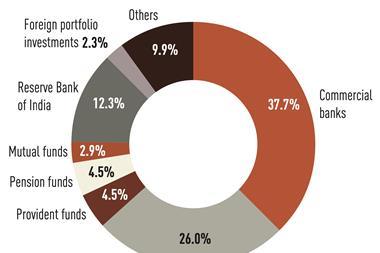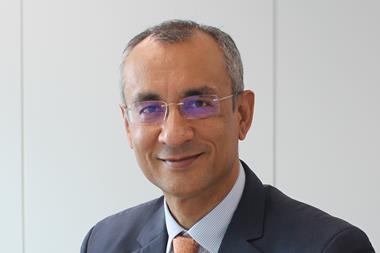For a third consecutive year, Chinese equities are among the worst performing emerging markets, economic growth has slowed, and debt concerns remain prevalent throughout the economy. However, China continues to defy predictions of a hard landing while pushing ahead with gradual reforms in both capital markets and the broader economy.
With debt capital markets still a largely untapped source of financing IPA spoke to a range of market participants who, debt and corporate governance concerns aside, maintain a relatively bullish view on the country’s outlook and are confident in the potential for fixed income investors to help sustain rapid long-term growth in the world’s second largest economy.
Gradual liberalisation
Concerns over the sustainability of the investment-led growth model, local government debt and an uneven pace of reform have taken the sheen off what has been, over the last decade, the outstanding global market success story. The Chinese government has become more tolerant of lower growth, with environmental and social welfare issues assuming more significance on the policy agenda, accelerating the transition to a new growth model and forcing the market to revisit core assumptions on Chinese development. At the same time, however, the government continues to promote gradual liberalisation of key aspects of the economy and capital markets, including expansion of the role for foreign investors. It has reined in the expansion of bank credit and is working to get a better handle on the distribution of assets and liabilities in the economy, a process seen as critical. There have been enormous reforms in the last three years, says Patrice Conxicoeur, managing director and global head of insurance coverage at HSBC Global Asset Management. “Forecasts that reforms would grind to a halt during the political transition were plain wrong. There have been significant developments on the market-side as well as the industry side.” Conxicoeur’s colleague Geoff Lunt, director and senior product specialist for Asian fixed income at HSBC GAM, adds there have been significant developments in the fixed income space. “China’s domestic fixed income market is the third largest in the world and is rapidly evolving, particularly on the corporate side. The sovereign market is also developing due to decent GDP growth. We’re seeing reform and development in a number of areas. There’s been some access for foreigners to onshore bond markets as part of the development of RMB.” Nevertheless, China’s bond market remains relatively small, at just RMB26trn ($4.2trn), or 45% of GDP, well below the levels of other large economies. Bulls argue it remains a huge untapped source of funding in the economy.
Debt capital financing
Earlier this year, debt capital financing was highlighted by senior officials as a key source of financing for the new government’s ambitious urbanisation plan. Incremental reforms in the space continue. Sovereign issuance is increasing and the municipal bond pilot scheme has been expanded. In March, QFIIs were granted access to the interbank bond market, while the government has engineered several stress tests on the market, including the June SHIBOR spike and a new audit of local government debt. Andrew Main, managing partner at Stratton Street Capital also struck an upbeat tone. “Our belief in the fixed income story in China is as strong now as it was when we launched our RMB Bond fund in November 2007. The market’s still in its infancy but it is on course to be the size of France and Germany combined by 2020, as Goldman Sachs forecast in 2006. We think investors in US and Europe should be thinking about China more and looking how they gain their initial exposure to Renminbi.” Market mechanisms missing .
Despite these developments, crucial aspects of a fully-functioning bond market are still missing. These include clearer regulations on asset ownership and protection, full access to futures trading and other hedging strategies as well as more robust mechanisms for creditor protection. The authorities need to expand issuance of sovereign and high-grade corporate debt in order to deepen liquidity and build out the longer-dated end of the yield curve. “We accept that there are other issues including poor corporate governance and a lack of regulatory clarity in the onshore markets,” says Stratton Street’s Main. “Clearly, this is a young capital market that hasn’t yet seen a full economic cycle. Long-term debt issuance is thin and we still need to see bankruptcies. There is too much co-mingling of assets, poor asset protection and underdeveloped trust and depository laws.” The need for a larger investment grade corporate sector was cited by several interviewees as important to establishing a long-term investor base. According to HSBC GAM’s Lunt, this goes hand in hand with the need for better credit ratings mechanisms. “It’s just a fact of life that many foreign institutional investors require ratings. But often Chinese issuers don’t understand the point of getting their bonds rating. They think if people pay, why get it rated? The answer is that you close yourself out of the institutional market. Companies will come to realise that getting a rating lowers the cost of capital in the long-term. I would say the situation with ratings agencies is improving and the standard of ratings work is rising. Lingering liability concerns .
Another key challenge is the need to audit and match assets and liabilities in the economy. Rapid credit expansion since 2009 has created pockets of concern, the most high-profile of which are accumulated debts of around RMB10bn at local government level and the growth of trust companies and wealth management products to some RMB7trn each. Combined, these liabilities constitute roughly 40% of GDP in conservative estimates. “To some extent, investors are becoming more comfortable with the local government debt situation but it’s still very much on the list of China concerns. We still get asked about it a lot, says HBSC GAM’s Lunt. “The market finds it difficult to put a handle on it and work out the implications.” “It’s true some local government have invested in some white elephant projects. Moreover debt has grown rapidly to a large level,” says Joe Zhang, Chairman of Slow Bull Capital, an advisory firm in Hong Kong, and author of the recent publication Inside China’s Shadow Banking: The Next Subprime Crisis. Zhang argues that, given the backing of the sovereign, the situation is not as acute as many commentators believe. “Not many people have looked at the asset side. Local governments have acquired a massive amount of cash generating assets. In my view, their ability to repay debt is still solid. China does not have a third rule government system, and local governments can be thought of as branches of the central government. If we look at assets-to-liabilities on a combined level, the situation is quite healthy. Even accounting for wasted funds, the government has developed a tremendous array of businesses and the rising tide of inflation has lifted all boats over the last 30 years.” Rather than credit bubbles waiting to burst, more bullish market participants see China’s debt issues as an asset liability mismatch that needs to be resolved, bringing with it opportunities for institutional investors. As HSBC GAM’s Conxicoeur says: “I would say there are duration and investment gaps between assets and long-term liabilities, and these need to be closed. Foreign firms do have a role to play here. There’s clearly a need to transfer debt toward capital markets, but before that they probably need to clarify the risks.” Junk bonds and securitisation .
While larger institutions may be looking for an increase in investment grade corporate and sovereign debt, others see opportunity in the mainland’s high-yield markets. Small and medium sized enterprises have generally been closed out of bank lending and equity financing. The emergence of a junk bond market may allow them greater participation in the capital markets, thereby accelerating China’s economic rebalancing. “I’m very excited about the prospects for junk bonds,” says Slow Bull’s Zhang. “We’ve had 30 years of tight restrictions on fixed income market development. There’s a strange rating system with every company seemingly top-rated, while SMEs have very limited access to raising corporate debt. But as I see it the trust sector is effectively a junk bond market with a different name – only the bonds are not traded in a secondary market.” “There is also some appetite to take on government debt among institutional investors. Last year, UBS bought a $200m stake in Cinda, one of the Chinese AMCs. There are various ways the government can repackage assets and liabilities, and making them more attractive to investors. In terms of pace of take-up, the big question is to what extent the market determines the price and the government underwrites the liabilities.” Asked how quickly he expects this process to unfold, Zhang strikes a slightly cautious tone. “I think it’s a little premature to be thinking about tradable trust products. The government is opening the door a little bit to the corporate debt and the interbank market, but I don’t think we’ll see a lot of movement in the next two or three years.
Global index issues
However, the impetus for greater participation does not only come from the Chinese side. Institutional investors in Europe and the US still pay too little attention to Chinese fixed income markets, according to Stratton Street’s Main, something due partly in light weightings for Chinese markets in global indices as well as a general lack of appreciation of the opportunities present in the Chinese bond market growth story. “We’re disappointed by how backwards looking indexes have remained, particularly for long term forward-looking investors such as pensions funds. China is the world’s second largest economy and on course to represent 25% of global GDP by 2050, but global indices are based on issuance and availability rather than GDP,” argues Stratton Street’s Main. “For example, China represents just 2.21% of the JPM ELMI+ index and 0% of the JPM GBI-EM Global index. Hungary is 5.28% of the ELMI+, so long-term, forward looking institutions are effectively being told they should have twice as much exposure to Hungary than to China! As we see it Asia generally is under-represented in a lot of indexes and nowhere is this truer than for China.” Role for pensions and insurers .
The evolution of China’s bond markets will clearly present opportunities for long-term institutional investors, according to those interviewed. But given the given the latent risks in the economy and the sensitivities associated with how to deploy pensions assets, the authorities are unlikely to allow too radical pace of reform, there is still a note of cautious. “They’ve been speaking about a role for pensions funds on and off for some time,” says Slow Bull’s Zhang. However the pensions system is fragile and underfunded, while the equities market has underperformed and there are lingering concerns on credit quality. So I think the government probably see it as a little too early to allow a large role for pensions funds.” According to HSBC GAM’s Conxicoeur, the key question is if “there really opportunity for foreigners to be active in the Chinese pensions market? To be honest, right now I’m not sure, but it is certainly a space that is worth monitoring. One problem faced by both foreign insurers and pension funds is distribution in the local market, which is dominated by the large domestic players. “This brings us back squarely to pensions funds and insurers. They have the cash, but the problem they have is even if they want to deploy capital over the long-term, a lot of the instruments they need to do this have not yet been created,” he adds. A bright future? The growth potential of China’s fixed income markets is hard to dispute, and exposure to Chinese debt capital markets looks like becoming a growing part of both domestic and foreign institutional portfolios. So long as the economic growth story remains on track and the authorities push ahead with a steady pace of reforms, the depth and liquidity of the markets will increase. Improving the investment culture will also take time. According to HSBC GAM’s Lunt, greater access for foreign investors can help in this process. “It’s really about arriving at a certain way of doing business through evolution rather than regulations. Foreigners can help bring fundamental discipline and bond valuations improve due diligence. For example we demand same levels of disclosure from any issuers. When we’re denied it, we simply don’t invest in the instrument. “There’s a long way to go, but even in the five years we’ve been involved, the government has made strong progress on building a rule of law that allows the smooth transaction of trade and they are now turning their attention to capital movement. These issues are nothing new, we’ve seen it with Japan and other emerging Asian nations.”











No comments yet